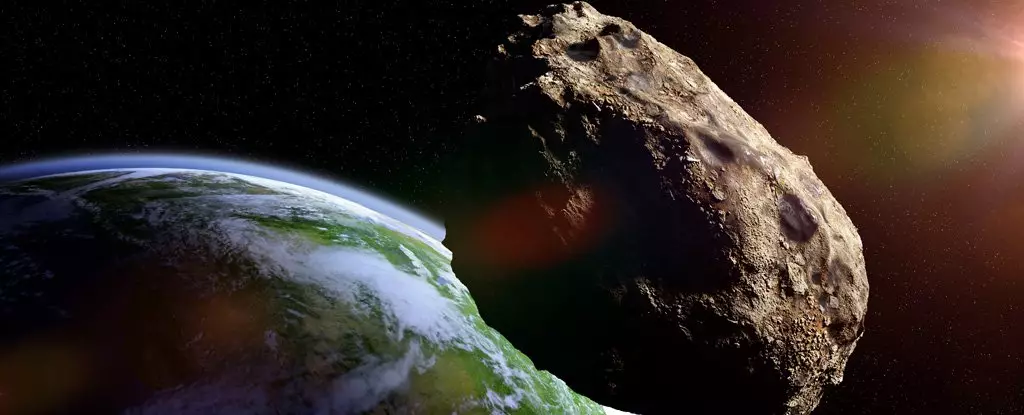As technology advances and our understanding of celestial mechanics improves, the monitoring of asteroids has become a pressing priority for space agencies around the globe. One such celestial object, asteroid 2024 YR4, has now come into sharp focus, presenting notable implications for Earth. With a statistical chance of 1 in 83—about 1.2%—that it may collide with Earth by 2032, the asteroid has prompted a coordinated response from the International Asteroid Warning Network (IAWN) and other global organizations focused on planetary defense initiatives.
First observed on December 27, 2024, from a telescope located in Río Hurtado, Chile, asteroid 2024 YR4 initially appeared with alarming implications. The asteroid’s designated size, estimated to be between 40 and 100 meters in diameter, suggests it could cause significant regional damage if it were to strike Earth. The potential impact zones defined by IAWN include areas in the eastern Pacific, northern South America, Africa, and South Asia. While the asteroid does not pose an immediate global catastrophic threat, any impact would still have severe localized effects—widespread destruction potentially spanning up to 50 kilometers from the impact site.
David Rankin, an engineer with the Catalina Sky Survey, noted that despite the asteroid’s considerable size, the most likely outcome remains a near miss. This statement encapsulates the dynamic between caution and optimism when dealing with near-Earth objects. The importance of continuous monitoring cannot be overstated; the capacity to refine predictions and understand the precise trajectory of 2024 YR4 is contingent upon improved observational techniques and data collection.
Asteroid monitoring is heavily reliant on real-time data. The IAWN’s response strategy emphasizes triggering further observations to confirm the asteroid’s trajectory. As astronomer Colin Snodgrass stated, only through persistent observation can the scientific community gain insight into the potential for an impact. Telescopic observations play a critical role in either ruling out dangerous scenarios or refining plans for possible evasive measures.
Telemetry gathered from various global observers, including the European Space Agency and NASA’s Near-Earth Object Studies team, currently indicates that the risk of impact lies slightly above 1%. This underlines the need for vigilance; while it presents a manageable risk, the acknowledgement of any degree of threat propels us toward proactive engagement. The asteroid has been classified with a rating of 3 on the Torino Scale—denoting that it requires monitoring. The Torino classification system has proven vital for flagging asteroids that bear potential risk to Earth, enabling a targeted response when necessary.
It’s essential to recognize that the initial observations of an asteroid can inflate the perceived risk of collision. Given that early calculations are based on limited data points, the uncertainty in predicting an asteroid’s path can initially seem to lead to a higher likelihood of impact. Astronomers utilize a ‘risk corridor’ approach, which broadens the area of potential impact to account for the uncertainty surrounding an object’s orbit. However, this apprehension should diminish as more information is gleaned from subsequent observations, allowing scientists to narrow down trajectories and rule out scenarios that once seemed concerning.
Asteroid 2024 YR4’s elongated orbit around the Sun compounds the difficulty in prediction. Presently, the asteroid is moving almost directly away from Earth, leading to extensive regions of spatial uncertainty. This complexity demonstrates how the modest percentage chance of an impact should be treated with a mix of caution and calmness as the risk assessment process evolves.
In light of potential threats posed by near-Earth objects, international cooperation is paramount. The upcoming meeting of the Space Mission Planning Advisory Group in Vienna offers a platform for discussing mitigation strategies. Should the risk assessment indicate a sustained impact probability above 1%, measures such as diversion or destruction of the asteroid via high-precision spacecraft might be needed. As many studies suggest, the technology to undertake such missions, much like NASA’s successful Dart mission, is available.
It is the collaboration among global entities, combined with advancing scientific knowledge, that will allow us to address and mitigate the potential cosmic risks posed by asteroids like 2024 YR4. The stakes are high, and as humanity continues to venture beyond our planet, ensuring the safety of our world remains a primary objective. The lessons learned in monitoring and averting asteroid threats will shape the future of planetary defense for years to come.

